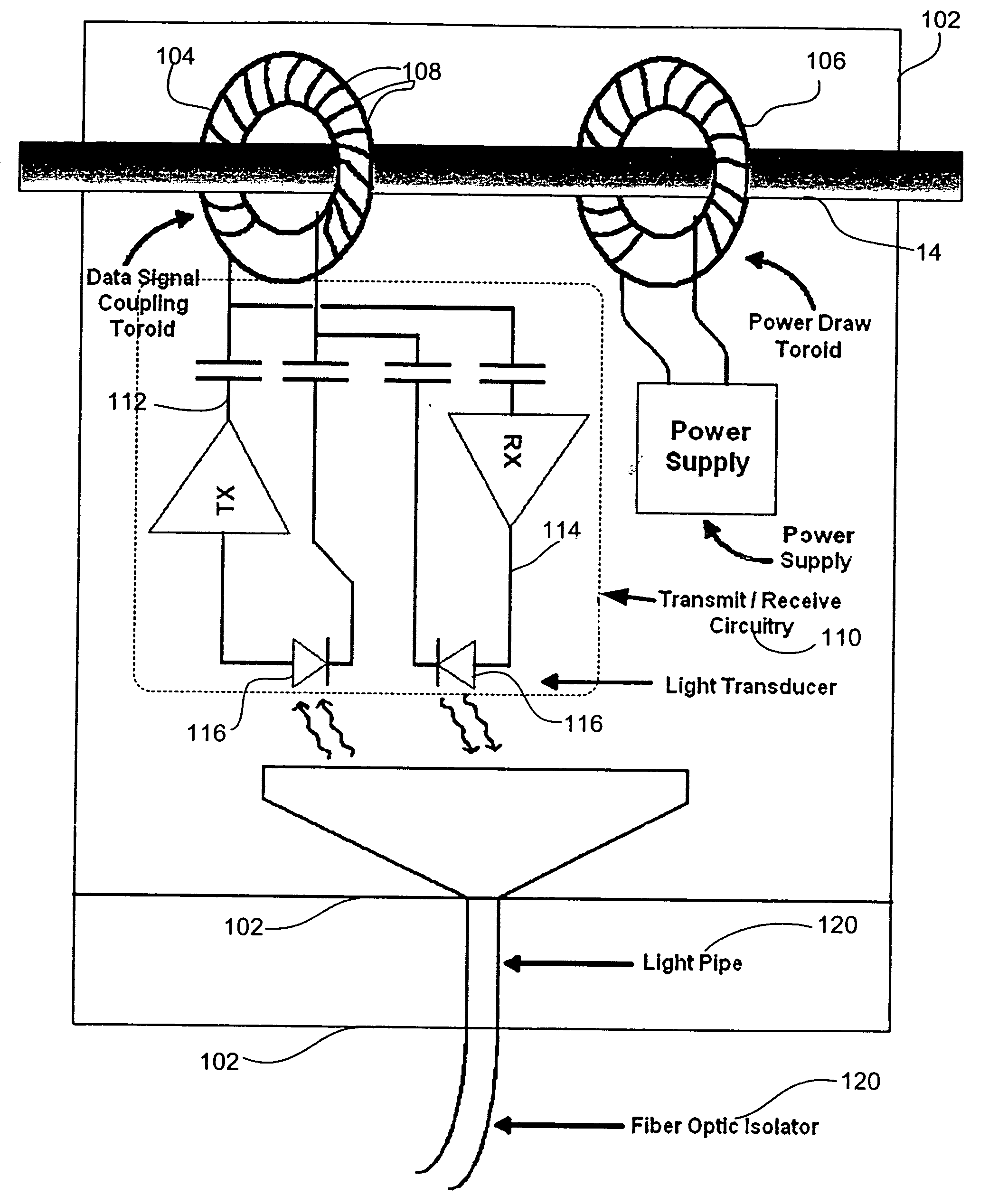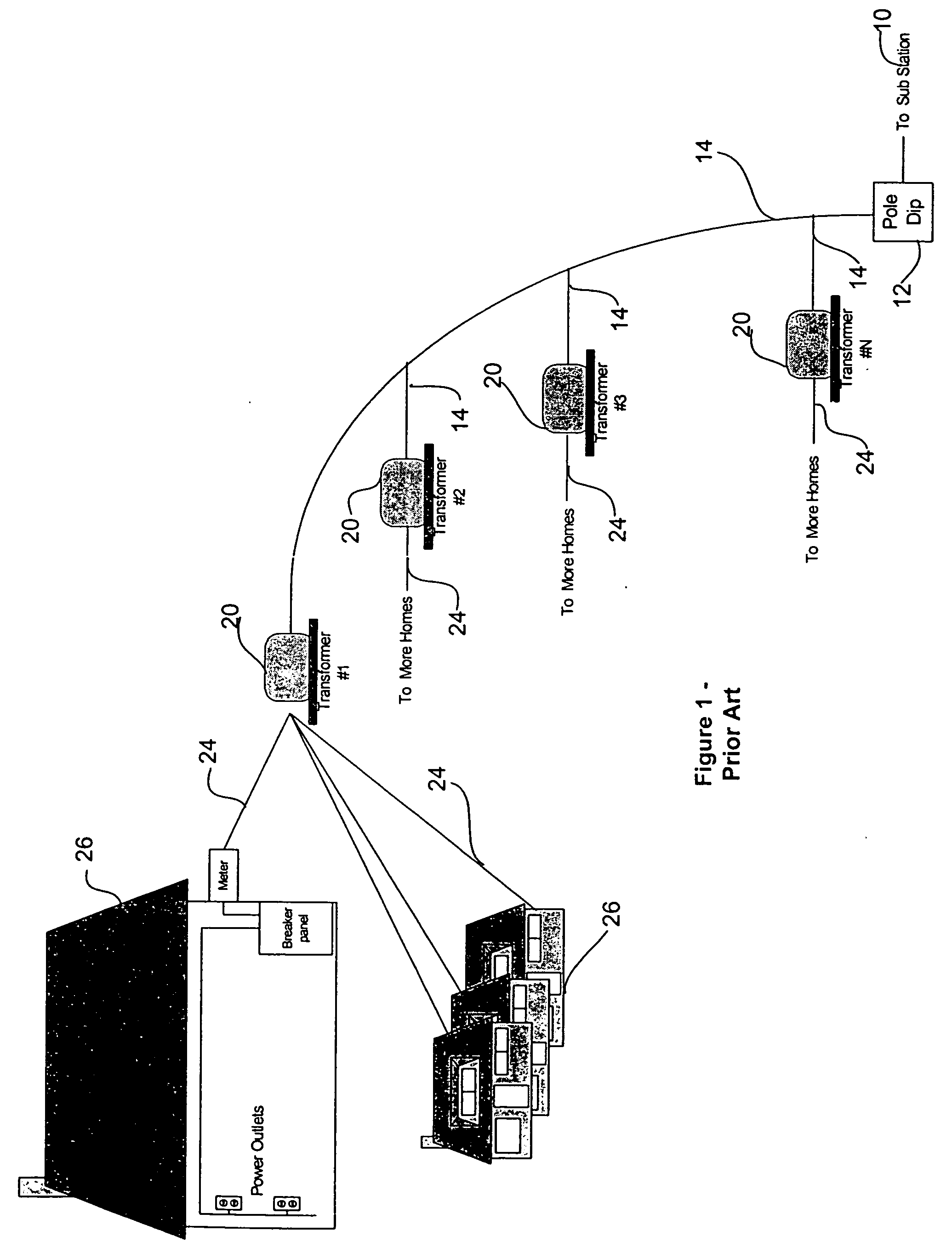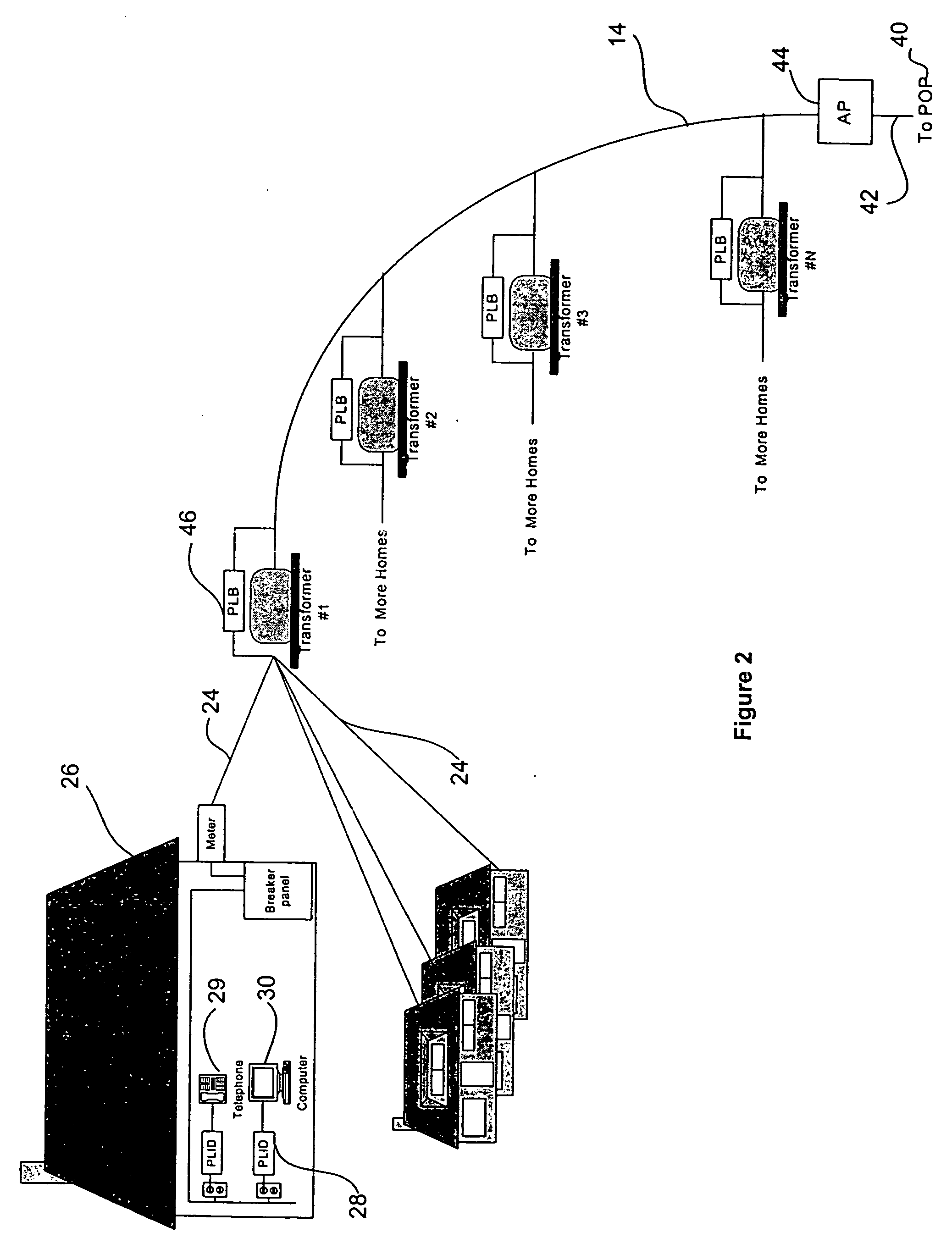Power line communication system and method
a communication system and power line technology, applied in the direction of electric controllers, ignition automatic control, instruments, etc., can solve the problems of poor high frequency impedance characteristics, insufficient broadband internet infrastructure, and difficulty in overcoming them, so as to facilitate the transmission and reception of data signals and maximize the flux linkage
- Summary
- Abstract
- Description
- Claims
- Application Information
AI Technical Summary
Benefits of technology
Problems solved by technology
Method used
Image
Examples
Embodiment Construction
[0052] The present invention is a power line coupler device specially suited for coupling and de-coupling high frequency, broadband signals carried over power lines within a power distribution system. The PLC device includes the coupler and circuitry necessary to condition the signal, to handle bi-directional signal transfer, to enable the use of an isolator, to be self-contained and to be able to provide operational power from the power line. The PLC device is part of an overall power line communication system (PLCS) which incorporates the present invention and other, companion inventions from the same inventor. The following description is a description of the PLCS in general. The PLC device embodiment is included in the system description. The description pertinent to the PLC device should be apparent to one skilled in the art.
[0053] Referring to FIG. 1, the typical electric distribution topology of the prior art is illustrated. Medium voltage (MV) half loop power delivery syste...
PUM
 Login to View More
Login to View More Abstract
Description
Claims
Application Information
 Login to View More
Login to View More - R&D
- Intellectual Property
- Life Sciences
- Materials
- Tech Scout
- Unparalleled Data Quality
- Higher Quality Content
- 60% Fewer Hallucinations
Browse by: Latest US Patents, China's latest patents, Technical Efficacy Thesaurus, Application Domain, Technology Topic, Popular Technical Reports.
© 2025 PatSnap. All rights reserved.Legal|Privacy policy|Modern Slavery Act Transparency Statement|Sitemap|About US| Contact US: help@patsnap.com



